Key Takeaways
- Carpenter ants excavate wood for nests, unlike termites that eat wood.
- Look for sawdust, wood shavings, or winged ants as early warning signs.
- Eliminate the entire colony, including the queen, for long-term control.
- Use baits, insecticides, and seal entry points to prevent re-infestation.
- Call professionals for severe or persistent carpenter ant problems.
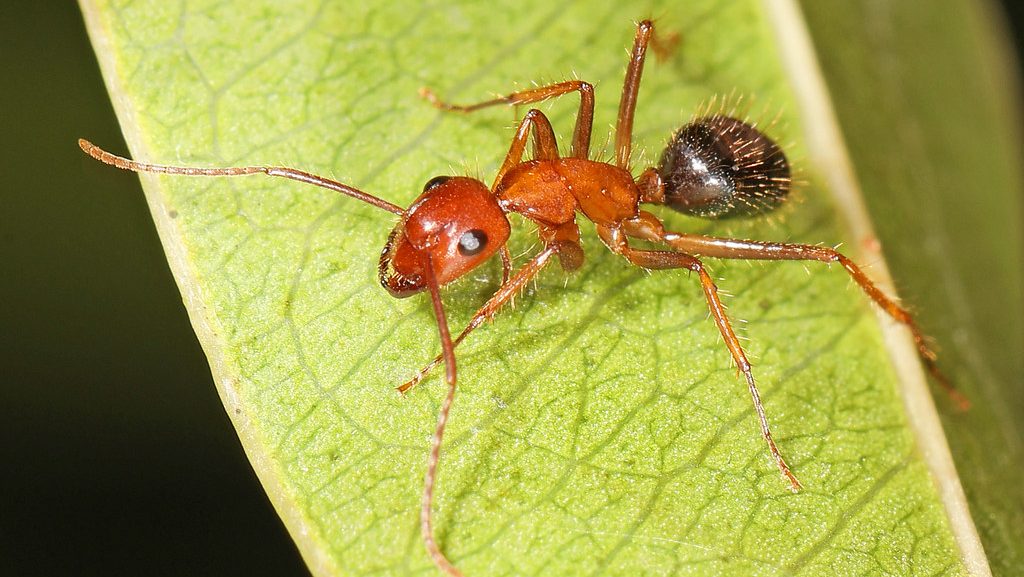 Carpenter ants are a serious threat as they can cause serious damage to your home. Carpenter ants don’t feed on wood, but they dig into it to create tunnels and nests, weakening your property. If you’ve spotted carpenter ants indoors, it’s crucial to understand when and how to eliminate them.
In this guide, we will help you decide when to kill carpenter ants, how to get rid of them, and natural alternatives to chemical pest control.
If you’re dealing with a carpenter ant infestation, it’s essential to act quickly to prevent further damage. Our expert pest control services can provide effective solutions to eliminate carpenter ants and protect your home. Get Your Free Pest Control Inspection done by us to prevent further infestation.
Carpenter ants are a serious threat as they can cause serious damage to your home. Carpenter ants don’t feed on wood, but they dig into it to create tunnels and nests, weakening your property. If you’ve spotted carpenter ants indoors, it’s crucial to understand when and how to eliminate them.
In this guide, we will help you decide when to kill carpenter ants, how to get rid of them, and natural alternatives to chemical pest control.
If you’re dealing with a carpenter ant infestation, it’s essential to act quickly to prevent further damage. Our expert pest control services can provide effective solutions to eliminate carpenter ants and protect your home. Get Your Free Pest Control Inspection done by us to prevent further infestation.
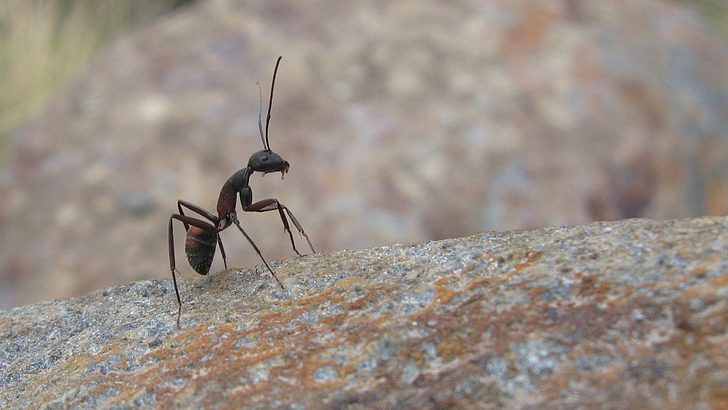

Not getting a solution?
Get your free pest control estimate today!What Are Carpenter Ants?
Carpenter ants are large ants recognized for their ability to carve out smooth tunnels and galleries inside wood to build their nests. They do not feed on wood but rather excavate it to create shelter for their colonies. They are commonly found in homes with moisture issues or water-damaged wood, as damp environments provide an ideal setting for them to establish their nests. Spotting carpenter ants early is crucial to prevent potential structural damage to your home.Characteristics of Carpenter Ants
-
Color: Carpenter ants are typically black, red, or reddish-black in appearance.
-
Size: They range from 0.25 to 0.5 inches in length, making them larger than most ants.
-
Habitat: Commonly nest in moist or water-damaged wood, attics, basements, and crawl spaces.
-
Diet: Feed on sugary substances and proteins, not the wood they tunnel through.
Should I Kill Carpenter Ants in My House?
Spotting one or two carpenter ants may not seem alarming, but it could signal a larger problem. Carpenter ants live in large colonies, and seeing a few ants indoors often indicates the presence of a hidden colony inside walls, floors, or attics. Left unchecked, these ants can cause severe structural damage as they hollow out wood to create galleries for their nests. Key warning signs include the regular appearance of ants, the presence of frass (wood shavings) near baseboards, windowsills, or beams, and faint rustling sounds within walls as ants tunnel through the wood. The appearance of winged ants indoors is a significant red flag, as these reproductive ants indicate a mature colony that may be seeking to expand. Ignoring these signs can allow the infestation to grow, resulting in hollowed wooden structures that weaken beams, joists, and supports, ultimately leading to costly home repairs.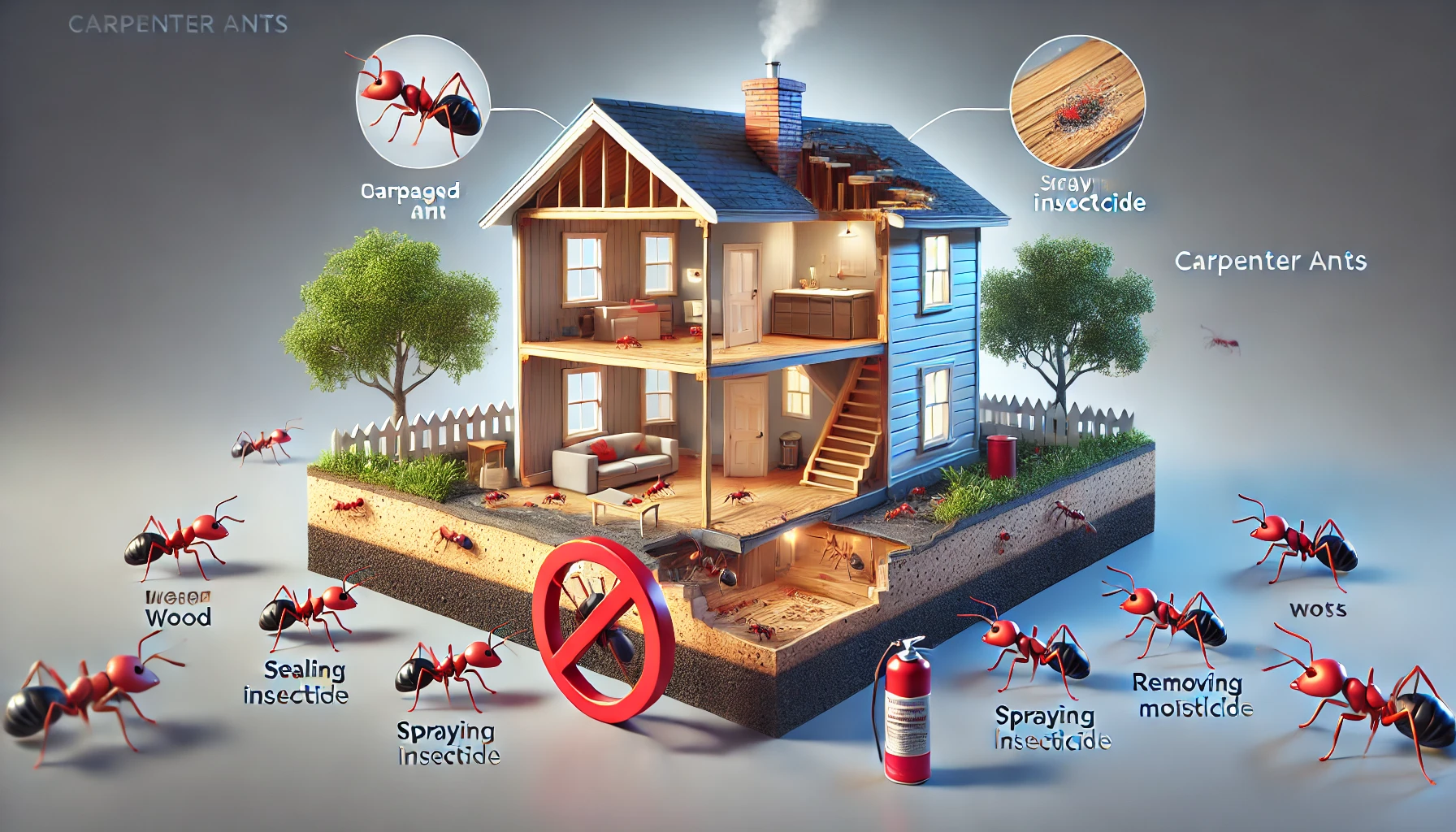
How to Get Rid of Carpenter Ants?
Getting rid of carpenter ants involves locating their nests, sealing entry points, and using effective control methods. Since carpenter ants can cause significant damage to wooden structures, it’s essential to act quickly and thoroughly to eliminate them.Steps to Eliminate Carpenter Ants
-
 Locate the Nest: Carpenter ants typically nest in moist wood, so it’s crucial to identify where they are living. Check attics, basements, crawl spaces, and areas near sinks, bathtubs, and windowsills. Look for signs like frass (wood shavings) or hollow-sounding wood. Following the ants’ trails can also lead you to the nest’s location.
Locate the Nest: Carpenter ants typically nest in moist wood, so it’s crucial to identify where they are living. Check attics, basements, crawl spaces, and areas near sinks, bathtubs, and windowsills. Look for signs like frass (wood shavings) or hollow-sounding wood. Following the ants’ trails can also lead you to the nest’s location. -
 Seal Entry Points: To prevent carpenter ants from entering your home, seal any gaps or cracks around windows, doors, utility lines, and pipes using caulk. Make sure vents, such as dryer and attic vents, are covered with fine mesh screens to block their entry.
Seal Entry Points: To prevent carpenter ants from entering your home, seal any gaps or cracks around windows, doors, utility lines, and pipes using caulk. Make sure vents, such as dryer and attic vents, are covered with fine mesh screens to block their entry. -
 Use Ant Bait: Ant baits are highly effective in eliminating entire colonies. The ants collect the bait and carry it back to the nest, eventually poisoning the colony, including the queen. Place bait near ant trails, windows, doors, and other potential entry points where ant activity is high.
Use Ant Bait: Ant baits are highly effective in eliminating entire colonies. The ants collect the bait and carry it back to the nest, eventually poisoning the colony, including the queen. Place bait near ant trails, windows, doors, and other potential entry points where ant activity is high. -
 Apply Pesticides: Pesticides may be necessary for severe infestations. Liquid insecticides can be applied around the home’s foundation and entry points, while dust insecticides can be used inside walls, behind baseboards, and in crawl spaces. The dust clings to the ants’ bodies, eventually eliminating the colony.
Apply Pesticides: Pesticides may be necessary for severe infestations. Liquid insecticides can be applied around the home’s foundation and entry points, while dust insecticides can be used inside walls, behind baseboards, and in crawl spaces. The dust clings to the ants’ bodies, eventually eliminating the colony.
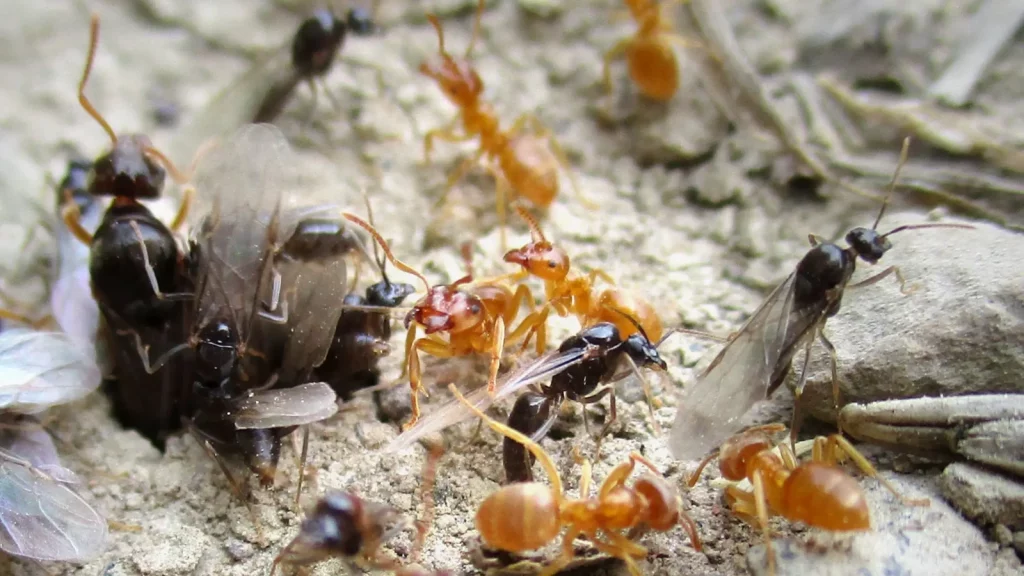
How to Get Rid of Carpenter Ants in Walls?
To eliminate carpenter ants in walls, start by drilling small 1/8-inch holes in the suspected infested area. Use a flashlight to check for ant movement or wood shavings inside. Once located, apply insecticide dust or foam through the holes. The foam expands to fill gaps, effectively killing ants within the colony. Another approach is to use foaming insecticides, which penetrate cracks and crevices where ants hide. Insert the nozzle into pre-drilled holes and spray until the cavity is filled. The expanding foam reaches hidden areas, ensuring the colony is thoroughly treated.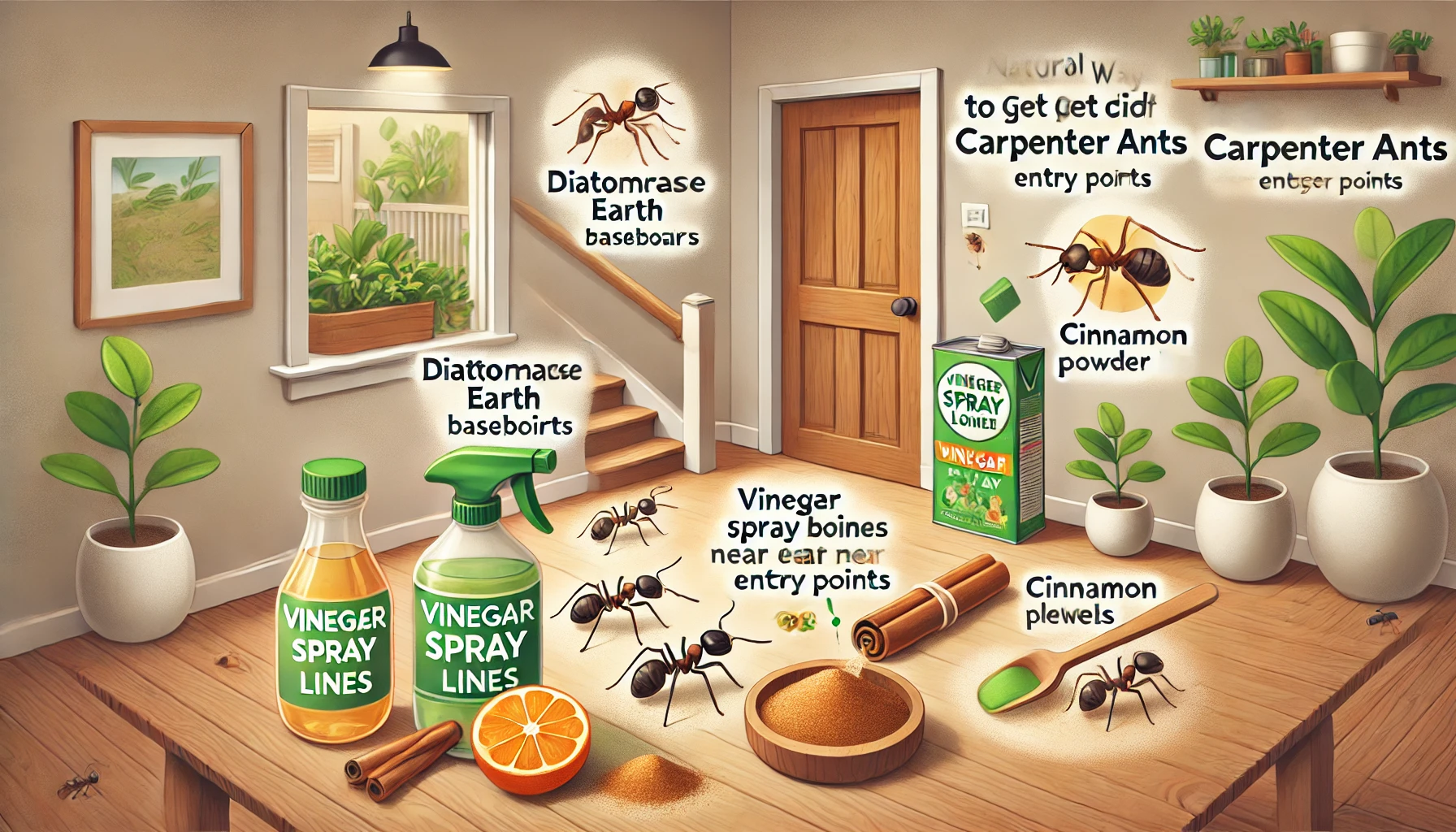
How to Get Rid of Carpenter Ants Naturally?
Getting rid of carpenter ants naturally is a safer alternative to using harsh chemicals. Natural remedies can effectively repel or kill ants using everyday household items. Here are some proven methods to eliminate carpenter ants naturally.Natural Remedies for Ant Control
-
 Vinegar Spray: Vinegar disrupts ant scent trails, making it harder for them to track their way back to their nests. Add equal parts vinegar and water and apply it to entry points, ant trails, and areas where ant activity is observed.
Vinegar Spray: Vinegar disrupts ant scent trails, making it harder for them to track their way back to their nests. Add equal parts vinegar and water and apply it to entry points, ant trails, and areas where ant activity is observed. -
 Essential Oils: Certain essential oils like peppermint, tea tree, and lemon naturally repel ants. Mix essential oil with water, then spray it along baseboards, cabinets, and potential entry points to keep ants at bay.
Essential Oils: Certain essential oils like peppermint, tea tree, and lemon naturally repel ants. Mix essential oil with water, then spray it along baseboards, cabinets, and potential entry points to keep ants at bay. -
 Diatomaceous Earth (DE): Diatomaceous earth damages the exoskeletons of ants, causing their dehydration and death. Sprinkle DE around entry points, behind appliances, and in crawl spaces. Keep it dry, as moisture reduces its effectiveness.
Diatomaceous Earth (DE): Diatomaceous earth damages the exoskeletons of ants, causing their dehydration and death. Sprinkle DE around entry points, behind appliances, and in crawl spaces. Keep it dry, as moisture reduces its effectiveness.
How to Prevent Carpenter Ants?
Stopping carpenter ants from invading your home is easier than dealing with an active infestation. Here are simple prevention tips to protect your home from these destructive pests:Preventive Tips for Pest Control
-
Block cracks and gaps around windows, doors, and utility lines.
-
Fix leaky pipes, faucets, and any moisture issues in the home.
-
Store firewood and wooden debris at least 20 feet from your home.
-
Trim tree branches that touch your house to block access points.
-
Keep your kitchen and dining areas clean and free of food crumbs.
-
Inspect and repair damp or rotting wood in decks, porches, and crawl spaces.
-
Cover vents, dryer openings, and attic vents with fine mesh screens.
-
Schedule routine inspections to catch potential infestations early.
Myths and Facts About Carpenter Ants
Carpenter ants are often misunderstood, leading to myths about their behavior and impact. Here are some common misconceptions and the facts that debunk them:| Myth | Fact |
|---|---|
| Carpenter ants are harmless to homes. | Carpenter ants damage homes by hollowing out wood for their nests. |
| Only visible ants are a problem. | The visible ants are only a small part of the colony; the main nest is usually hidden inside walls or wooden structures. |
| Carpenter ants eat wood like termites. | Carpenter ants don’t eat wood; they tunnel through it to create nests, unlike termites that consume wood. |
| Natural remedies always work for infestations. | Natural remedies may not be as effective for large infestations; professional treatment may be required. |
| Killing ants will solve the problem. | Killing a few ants won’t solve the problem; you must eliminate the entire colony, including the hidden nest. |





